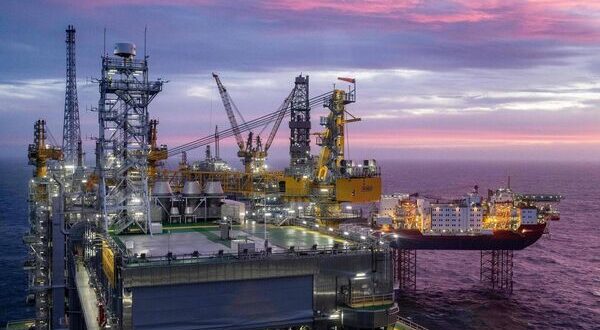Oil and gas companies plan to boost exploration activity and spending offshore Norway this year as Western Europe’s top oil and gas producer looks to maintain production and raise exports to the rest of Europe.
Currently, most exploration efforts are focused on areas around existing infrastructure so discoveries can be tied back quickly and create value while the fields are still in operation, the Norwegian Offshore Directorate said in its annual report this week.
While this is important for maintaining production levels in the near and medium term, the Norwegian Offshore Directorate said it “would like to see companies exploring actively in more frontier areas.”
“In order to realise more of the resource potential, companies must to a greater degree commit to testing new ideas in frontier areas,” the Norwegian authority said.
The robust exploration and production activity of the past year is set to continue into 2024, it noted in the report.
Last year, operators on the Norwegian Continental Shelf spudded 34 exploration wells, which is on par with recent years, and 14 oil and gas discoveries were made – 11 in the North Sea, two in the Norwegian Sea, and one in the Barents Sea, the directorate said.
This year, exploration activity will pick up, with 40 to 50 exploration wells planned by operators, according to the authority.
Overall, Norway’s oil and gas production was slightly lower than expected in 2023, largely due to unplanned and extended maintenance shutdowns at multiple fields and onshore facilities during the summer.
Gas production resumed full force starting from early autumn, with November and December being particularly good months for gas exports, Norway said. According to the directorate’s preliminary figures, a new export record for a single month was set in December, with just under 12 billion standard cubic meters of gas exported.
Currently, Norway has as many as 27 projects under development, contributing to robust activity in the supplier industry. The high development activity since 2022 means that Norway’s oil and gas production is expected to remain stable for the next few years.
Over the short term, the new fields coming on stream will offset lower production from aging fields, the directorate said.
It also highlighted that “The Norwegian shelf will continue to play an extremely important role for energy security in Europe for many years to come.”
Norway became Europe’s top natural gas supplier in 2023, replacing Russia, whose pipeline gas volumes to European customers plunged after the Russian invasion of Ukraine.
Norway, a key ally of the EU and a founding member of NATO, expects to continue exporting large volumes of natural gas and oil to Europe, but it will need more exploration, discoveries, and investments by 2030 to maintain the current high level of activity and production.
Investments in 2023 and 2024 are rising more than expected at this time last year due to high activity, a weaker Norwegian currency, and growing costs, the Norwegian Offshore Directorate said.
“An expectation of increased exploration activity moving forward contributes to growth in exploration investments from 2024,” the authority said, adding that “New investment decisions will be necessary to maintain activity leading up to 2030.”
Last year, the Norwegian government approved the development of 19 offshore oil and gas projects worth more than $18 billion (200 billion Norwegian crowns) in investments. The projects include new developments, additional development of producing oil and gas fields, and investments to increase resource recovery in producing fields.
Norway has been betting on the continued development of its oil and gas resources and has raised its natural gas production over the past year and a half to send more gas via pipelines to Europe.

The field centre of the Johan Sverdrup oil field in the North Sea west of Stavanger, Norway, is pictured on January 7, 2020. - Johan Sverdrup, situated some 140 km off the south western coast of Norway and operated by Equinor, is the third largest oil field on the Norwegian continental shelf, with expected resources of 2.7 billion barrels of oil equivalent. (Photo by Carina Johansen / NTB Scanpix / AFP) / Norway OUT (Photo by CARINA JOHANSEN/NTB Scanpix/AFP via Getty Images)
 Iran Energy News Oil, Gas, Petrochemical and Energy Field Specialized Channel
Iran Energy News Oil, Gas, Petrochemical and Energy Field Specialized Channel



